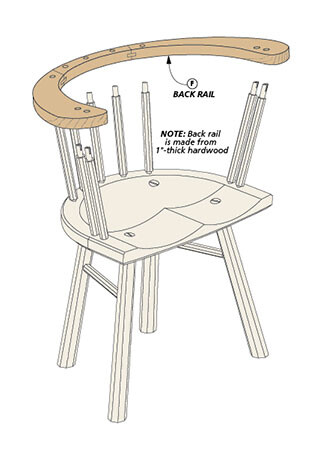Working on this now as Chapter 8 at:
https://willadams.gitbook.io/design-into-3d/mortise-and-tenon-joinery
Working on this now as Chapter 8 at:
https://willadams.gitbook.io/design-into-3d/mortise-and-tenon-joinery
Start with the variables:
then work up a module for making the mortises:
then make modules for each part:
and begin placing them:
The arc of the front/back of the sides should be drawn up as the intersection of a circle defined by the chord defined as twice the height and the height of the chord:
After modeling a few more parts:
all that’s left is working out the rotation of the step and the placement of some hardware.
Great tutorial @WillAdams!
Side note: I haven’t seen the name Macromedia in a decade or more!
Yeah, I was a beta-tester for Freehand/MX and before that used pretty much every version of Freehand all the back to Altsys Virtuoso 1 and 2 on my NeXT Cube and FH3 on the Macs in the computer lab.
Despair of what I’m going to do if it ever stops working — have had to roll back to Windows 10 build 1703 twice now so that I can continue to draw in it — guess I’ll need to see if I can get it running in WINE on my Raspberry PI. If I can, I’ll get a Wacom One and should be set for the foreseeable future.
Lastly, rather than the peg of the original we use a through dowel which will increase the rigidity:
Final step is laying out all the parts:
See the project in BlockSCAD here:
https://www.blockscad3d.com/community/projects/1104147
Next, export to OpenSCAD, tidy up the logic options and the Customizer interface.
Note that the matter of the mortises having square edges, but the tenons having rounded shoulders is not addressed in the above ---- this, and one other consideration will be adjusted after the files are set up to be imported into Carbide Create.
Opening the file in OpenSCAD it’s quick and easy to set it up to make a 2D file which can be exported as a DXF or SVG to import into Carbide Create:
Just an FYI. I make tenon joinery with a router and table saw. The tenons are made on the router and have rounded ends. The tenons are cut on the table saw and are rectangular. The extra space inside the mortises gives the glue squeeze out some place to go. However, there is no reason that the tenon cannot be rounded on the end also
Round tenons and mortises are common in timber frame joinery as well as rustic and fine furniture. For example, the Welsh Stick Chair.

Best regards,
Allen
Yes, rounded tenons were one of the forms I was planning on looking into.
The files above are a bit problematic in terms of proportion, and there’s a missing feature, but they mostly cut out (given that I was using a warped scrap) — will hopefully post a photo and further details presently.